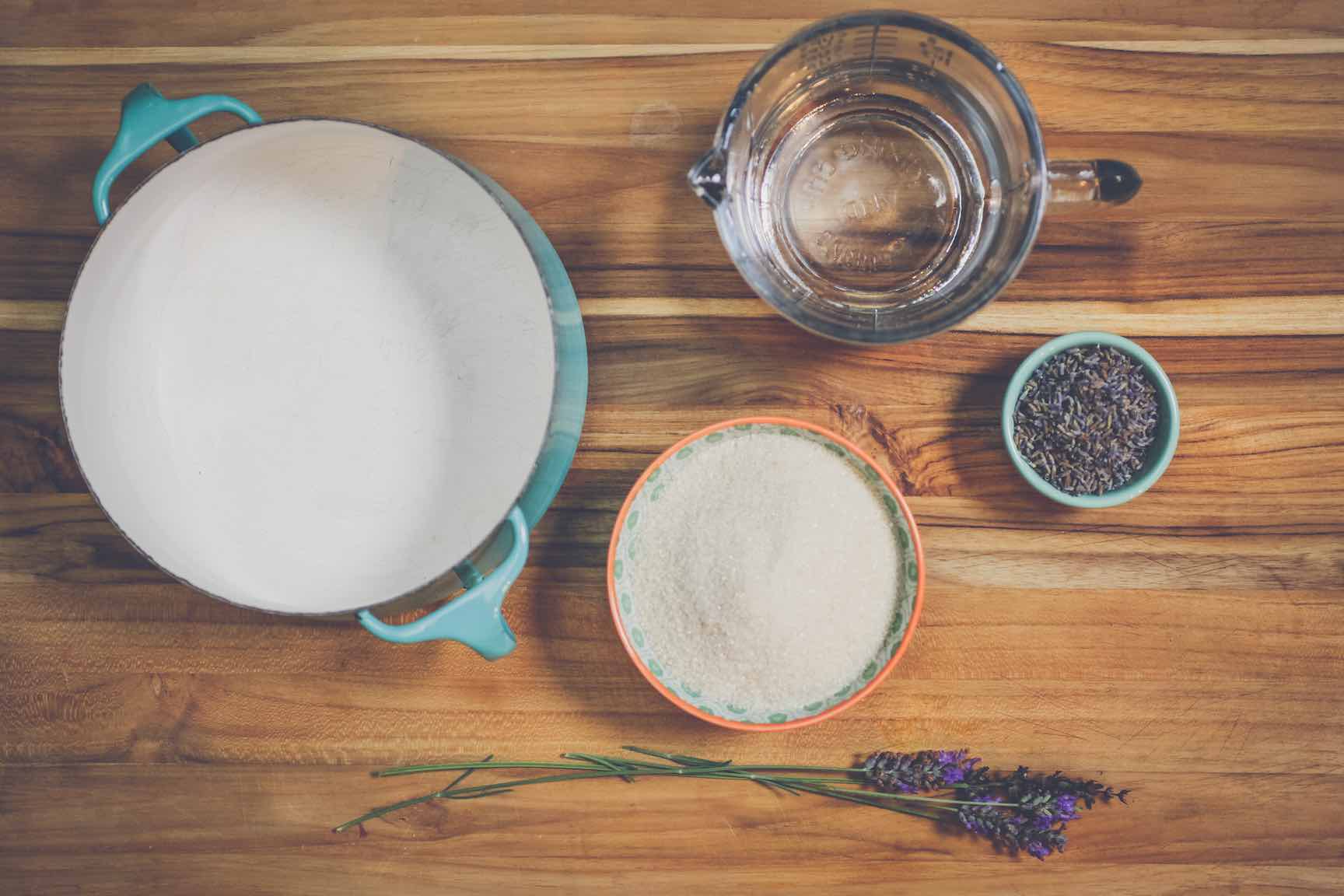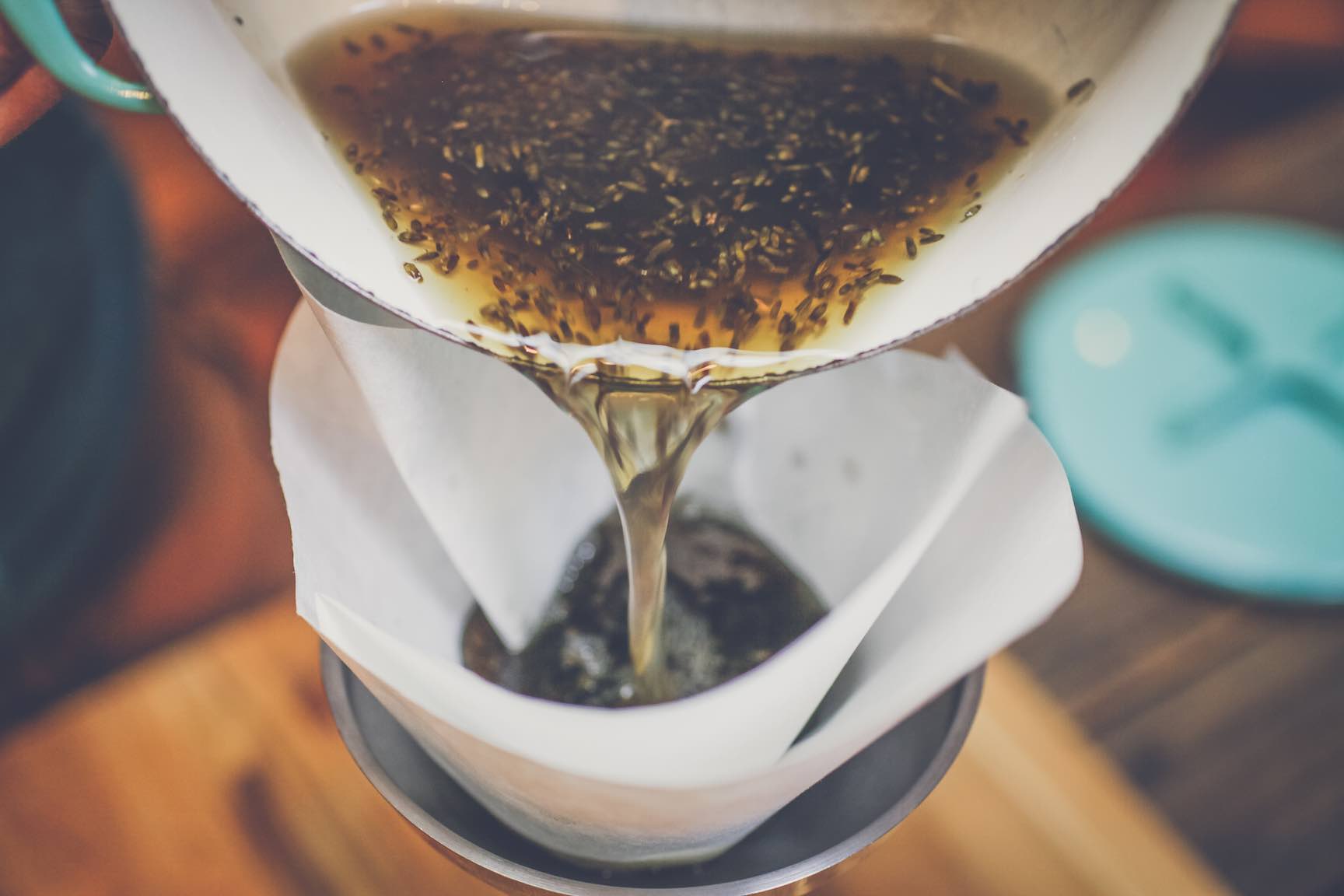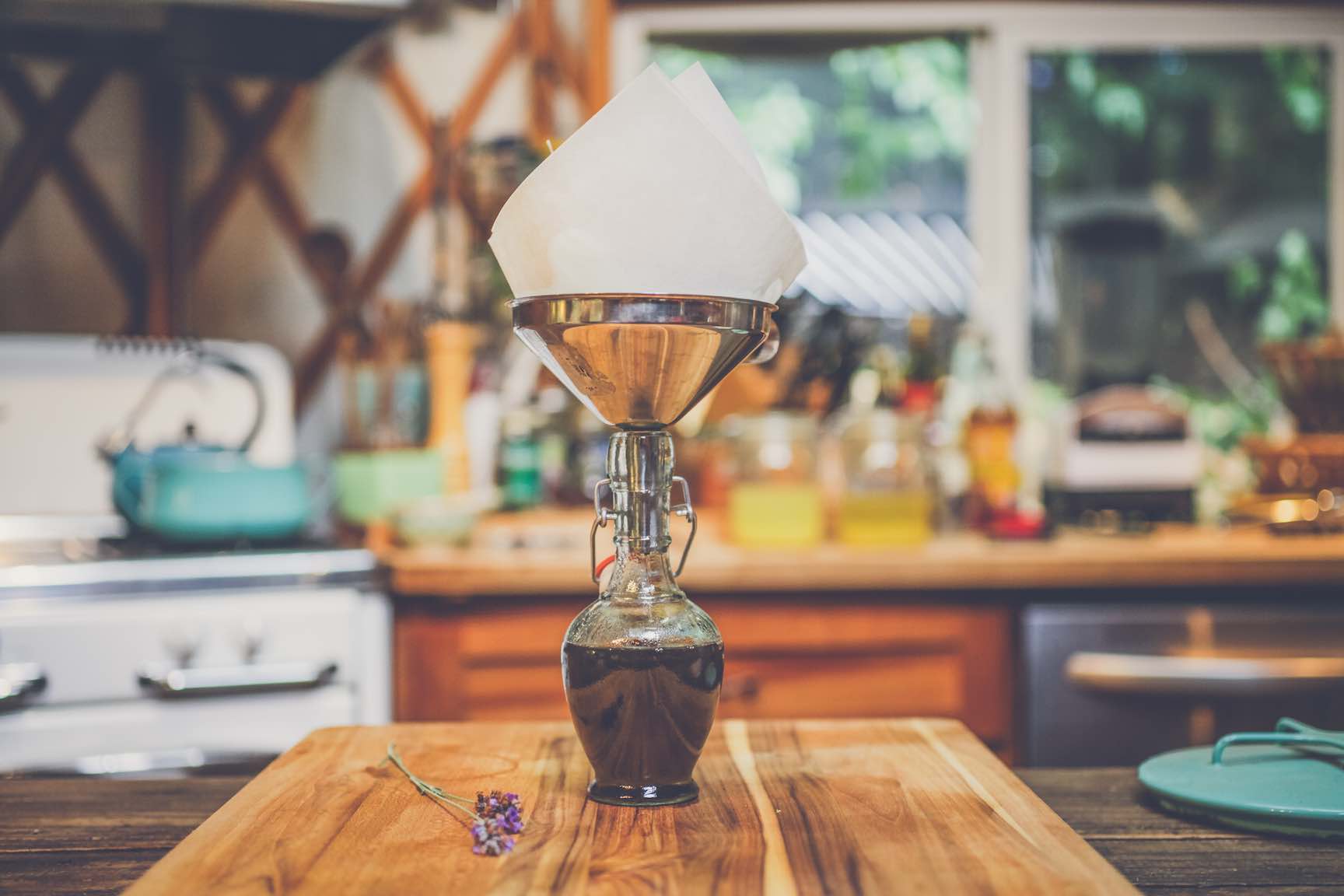- Continue Shopping
- Your Cart is Empty
Simple Syrups: Basic Recipe + 5 Delicious Variations

What You'll Need
Equipment
- Small saucepan
- Clean jars or bottles to store the simple syrup
Ingredients
- 1 cup water
- 1 cup sugar (white sugar is traditional for delicate flavors, but brown sugar, Demarra, or turbinado sugar may be used for a richer, stronger flavor in recipes like bitters.)
Simple syrups are the foundation of many a beverage, both alcoholic and non-alcoholic alike. The sweetness of sugar, or honey, balances the fiery blast of many hard alcohols, mellows and marries the various elements of a well-crafted cocktail. The mouth feel is thickened and softened by the addition of a silky simple syrup.
Because granulated sugar does not dissolve well in either cold water or alcohol, the sugar is combined with water in a 1:1 ratio, and heated to form a syrup. When the syrup cools, the sugar remains suspended in the liquid, allowing easy sweetening of cold beverages as varied as margaritas, iced tea, or kombucha.
Flavored simple syrups
Simple syrups are also supremely useful in the secondary fermentation and flavoring phase of both water kefir or kombucha, offering a way to extract flavors containing little to no natural sugars, so that the sweetening/carbonation and flavoring steps can be done at the same time, without diluting the brews with water or unfermented tea.
Flavors like lavender, ginger, and mint, are notoriously difficult to extract for use in kombucha and water kefir; since they do not contain sugar of their own, the beverage-maker must add both liquid in the form of, say, mint tea, as well as additional sugar to the fermented liquid.
Making a flavored simple syrup allows the flavor to be infused into the sweetener, so that the sugar and flavor are added at one time. It also provides a great way to regulate the strength and potential bitterness of flavors that can become too strong if left to infuse for too long.
Lavender, for instance, becomes terribly bitter if left to steep for too long, but when cooked just until boiling, and then let to steep as the mixture cools, the perfect balance of flavor is infused into the syrup, without overpowering.
Sometimes, additional water is added when creating a flavored syrup, to offset the strength of the flavor, or to compensate for absorbtion by the herbal ingredients; sometimes the additional water is boiled off, as in the case of ginger, which takes a longer time than lavender to impart it’s flavor to the syrup.
Keep in mind that these are general guidelines, and the amounts may safely be adjusted to suit your personal preference.
Simple syrups may be stored in the refrigerator for up to a month.
Directions for Plain Simple Syrup
1. Cook Sugar and Water
Combine the sugar and water in a small saucepan, and heat on low gently, stirring often, until the sugar is completely dissolved.


2. Cool
Remove from the heat and let cool in the saucepan.
3. Bottle and Store
Transfer the syrup to a clean jar or bottle for storage in the refrigerator, where it will keep indefinitely. If using a bottle for storage, you will need a clean funnel. A canning funnel will work for regular mouth or wide mouth jars.
Directions for Lavender Flavored Simple Syrup

Additional Ingredients...
- All the ingredients for the basic simple syrup recipe above
- 2 TBS dried lavender
- 1/2 cup additional water (making 1 1/2 cups total)

Follow the directions for the simple syrup above, adding the lavender and the additional water, as well as the usual amount of sugar all at once. Heat gently to dissolve the sugar completely.

Remove from heat and allow to cool, then strain through cheesecloth, a coffee filter or jelly strainer bag and bottle it for storage in the refrigerator.


TIP: Rosebuds can be substituted in this recipe for lavender; use 1/3 cup of rosebuds instead of lavender.
Directions for Ginger Simple Syrup
Additional Ingredients...
- All the ingredients for the basic simple syrup recipe above
- 1/4 cup fresh minced ginger root (or more, for mad ginger flavor!)
- 1 cup additional water (making 2 cups total)
Follow the directions for simple syrup, adding the ginger and the additional water. Heat gently.
After the sugar has dissolved, reduce the heat to low and continue to cook the syrup until the volume is reduced by half.
Remove from heat and allow to cool, then strain through cheesecloth, a coffee filter or jelly strainer bag and bottle it for storage in the refrigerator.
Directions for Mint Simple Syrup
Additional Ingredients...
- All the ingredients for the basic simple syrup recipe above
- 1 cup fresh mint, coarsely chopped and bruised with mortar and pestle (Substitute 1/2 cup dried mint if fresh is not available)
- 1/2 cup additional water (making 1 1/2 cups total)
Follow the instructions for simple syrup. adding the extra water. After the sugar has dissolved, reduce the heat to low and continue to cook on low for 30 minutes.
Remove from heat and allow to cool, then strain through cheesecloth, a coffee filter or jelly strainer bag and bottle it for storage in the refrigerator.
TIP: Rosemary, sage, tarragon, and other herbs can all be substituted for mint in this recipe, at the same measurements.
Directions for Honey Simple Syrup
Follow the directions for simple syrup, substituting 3/4 cup honey for the sugar.
The choice in honey will greatly influence the flavor of the finished product, as honeys can taste very different, depending on their floral source.
Directions for Rich Syrup
A rich syrup is much like a simple syrup, but it is generally made with more richly flavored sugars, such as Demarra or Turbinado. It also has a higher sugar content, making it, well, richer, all around.
Follow the directions for a simple syrup, substituting Turbinado or Demarra sugar for white sugar. Use an additional cup of sugar, bringing the total sugar to 2 cups.
After the sugar has dissolved, remove from heat and allow to cool, then strain through cheesecloth, a coffee filter or jelly strainer bag and bottle it for storage in the refrigerator.
Over to You
It’s part of our mission here at Mountain Feed to help you make delicious, sustainable, homemade food more often. Stop by and say hello on Facebook, Twitter, Instagram or Pinterest. Or, as always, you can do it the old fashioned way and come by the store to speak with one of our in-house experts.
